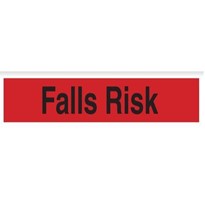How is it measured?
Hygiena ATP testing devices contain a natural enzyme found in fireflies. This enzyme produces a simple bioluminescence (light giving) reaction when it comes in contact with ATP.
Using bioluminescence technology, Hygiena Luminometers can measure extremely low levels of ATP collected with testing devices (swabs). Measuring light produced from the reaction with ATP gives an excellent indication of surface cleanliness because the quantity of light generated is directly proportional to the amount of ATP present in the sample. The reaction is immediate, and results can be processed in seconds. The result is expressed numerically on the luminometer screen as a Relative Light Unit (RLU).
How and where is it helping to reduce infection risks?
In ultrasound departments and clinics — Case study: Using ATP Monitoring to Maintain Hospital Ultrasound Equipment (1). Conducted in Sydney across 5 facilities, the study showed that out of 253 surfaces tested, 26% showed possible or definite lack of cleanliness (RLU readings at 100 or above). Of these, 6% had to undergo a cleaning intervention more than once to achieve the intended level of cleanliness, which had been set at 25 RLUs or below. Where a surface was challenging to clean or had residual organic matter, none were able to be identified without ATP testing.
In sterilisation departments (CSSDs) — ATP testing is being carried out on equipment put through the washers to ensure that organic matter has been removed prior to sterilisation. A level of 10 RLUs or below is set for this testing. The EndoSwab brushes also allow testing to be conducted on the inner channels of lumen scopes and other small hard to get to places. ATP testing is an accepted method of validation in the AS/NZ 4187 Guidelines which include recommendations on validation of cleaning lumen and non-lumen scopes. This method is being used in many Australian Hospital CSSDs.
In aged care — Case Study: Brent Care Home Study (3). The outcomes of implementing ATP Cleaning Verification showed a reduction in viral contamination based on peer reviewed studies. The outcomes were that it re-assured customers and staff that their operation was clean and safe with validated cleaning data; differentiated them from their competitors; and minimised the turnover time for rooms and facilities with faster cleaning verification. It identified difficult areas before they became a problem, reducing the risk of infection and protected their brand from negative PR related to an outbreak.
Rampling et al (2001) J. of Hospital Infection. Vol 49, 109 –116 (2) showed additional cleaning resulted in a reduced rate of environmental isolation and infection of MSRA from 42% to 0%.
Cost benefit analysis was A$170k per ward per annum (costs converted to 2021 in line with inflation).
In general environments within healthcare — Case study: North Tees and Hartlepool Hospitals, United Kingdom. In this study conducted by North Tees and Hartlepool Hospitals in the UK, data showed that by monitoring cleaning performance with the Hygiena SystemSURE Plus, these two hospitals experienced a 20% increase in Pass scores. In this study, Pass scores were categorised as any score below 100 RLU. During this time, the hospitals also experienced a 35.24% reduction in reported post 48-hour C. Difficile infections. (Hygiena 2012) (4)
Anaeron is working closely with Australian healthcare facilities on how ATP Testing can assist with reducing the risk of infection and contamination. We provide training and on-going support to each user.
What our customers say about us: “It is very refreshing, especially in these trying times, to deal with a company that actually cares about their clients.” And “The support we receive from the staff at Anaeron is second to none. They are very knowledgeable in their field, professional and ethical. They are always available to provide assistance and advice to their clients.”
Hygiena Luminometers and Swabs lead the world in sensitivity, accuracy, repeatability and do not require expensive re-calibration of units.
Data Sourced from Guh A and Carling PC. Options for Evaluating Environmental Cleaning. Centers for Disease Control and Prevention. 2010.(5) showed that Hygiena ATP Testing removed bias, was quantitative, timely, acted as a training and management tool, was fraud-proof and provided software analysis.
SureTrend Software developed by Hygiena comes pre-set with reports, graphs and charts. Test results are captured and can be immediately analysed to assist in providing feedback and improve on cleaning performance. Continuous improvement is an essential part of the Hygiena ATP cleaning verification system.
For more information and on the latest technology of Hygiena Luminometers and ATP Rapid Hygiene testing contact Anaeron Pty Ltd, distributors of Hygiena into Australian Healthcare.
References
1. Case study: Using ATP Monitoring to Maintain Hospital Ultrasound Equipment. Hygiena website; Resources.
2. Rampling et al (2001) J. of Hospital Infection. Vol 49, 109–116.
3. Brent Care Home Study. Hygiena website; Resources.
4. Hygiena (2012) Case Study: North Tees and Hartlepool Hospitals, United Kingdom. Two Hospitals Improve Cleaning Sores and Experience Lower Infection Rates.
5. Guh A and Carling PC. Options for Evaluating Environmental Cleaning. Centers for Disease Control and Prevention. 2010





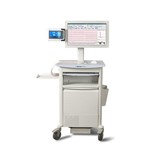
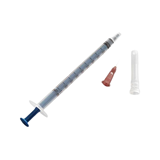
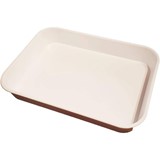

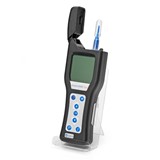
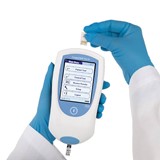
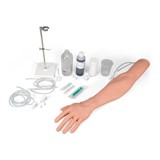
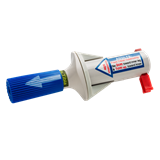




-205x205.jpg)



